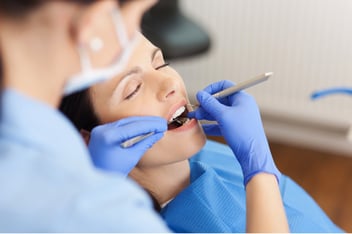Dental Check-Up: Comparing X-Rays and Other Diagnostic Methods
Regular dental check-ups are essential for maintaining optimal oral health. During these check-ups, dentists employ various diagnostic methods to assess your dental condition and detect any underlying issues. In this blog, we will explore the benefits and limitations of X-rays as a common dental diagnostic tool and compare them to other methods used in dental check-ups.
I. The Role of Diagnostic Tools in Dental Check-Ups
A. Comprehensive evaluation: Diagnostic methods provide dentists with valuable information about the overall dental health of patients.
B. Early detection: Detecting dental problems at an early stage allows for prompt intervention and treatment, preventing further complications.
II. X-Rays: A Closer Look
A. X-ray technology:
X-rays use low levels of radiation to create detailed images of teeth, gums, and underlying structures.
B. Benefits of X-rays:
Detecting hidden issues: X-rays can reveal dental problems that are not visible during a regular dental examination, such as tooth decay, bone loss, or impacted teeth.
Planning treatments: X-rays help dentists plan and execute treatments, including tooth extractions, root canals, and orthodontic procedures.
Monitoring oral health: X-rays allow dentists to monitor the progression of dental conditions and track changes over time.
III. Alternative Diagnostic Methods
A. Intraoral Cameras:
High-definition images: Intraoral cameras capture detailed images of teeth, gums, and oral structures, aiding in diagnosis and treatment planning.
Enhanced patient understanding: Dentists can display images on screens, enabling patients to see and understand their oral health conditions.
B. Laser Diagnostics:
Early caries detection: Laser devices can detect early signs of tooth decay, often before they are visible on X-rays.
Non-invasive approach: Laser diagnostics are painless and require no radiation exposure.
C. Digital Impressions:
Accurate 3D models: Digital impressions create precise digital replicas of teeth and oral tissues, assisting in restorative treatments like crowns, bridges, and implants.
Comfort and convenience: Digital impressions eliminate the need for traditional putty impressions, reducing discomfort and saving time.
IV. Choosing the Right Diagnostic Method
A. Case-dependent approach: Dentists select diagnostic methods based on individual patient needs, considering factors like age, dental history, and specific concerns.
B. Complementary use: Different diagnostic methods often complement each other, providing a more comprehensive assessment of oral health.
V. Affordable Dental Check-Up Options
A. Dental Insurance: Many dental insurance plans cover routine check-ups, including X-rays and other diagnostic methods, making them more affordable.
B. Dental Discount Plans: Discount plans offer reduced rates on dental services, including check-ups and diagnostics, for individuals without insurance.
C. Community Dental Clinics: Community clinics often provide low-cost or sliding-scale fee options for dental check-ups and diagnostics.
Conclusion :
Dental check-ups rely on various diagnostic methods to assess oral health accurately. X-rays play a crucial role in detecting hidden issues, planning treatments, and monitoring oral health over time. However, alternative methods like intraoral cameras, laser diagnostics, and digital impressions offer additional benefits, such as high-definition images, early caries detection, and improved patient comfort. Dentists choose diagnostic methods based on individual needs, ensuring a comprehensive evaluation. Affordable dental check-up options, including insurance coverage, discount plans, and community clinics, make these important assessments more accessible. Remember, regular dental check-ups, combined with appropriate diagnostic methods, contribute to maintaining optimal oral health and preventing dental complications.
.png?width=80&height=80&name=Clove%20Dental%20White%20Small%20(28).png)



